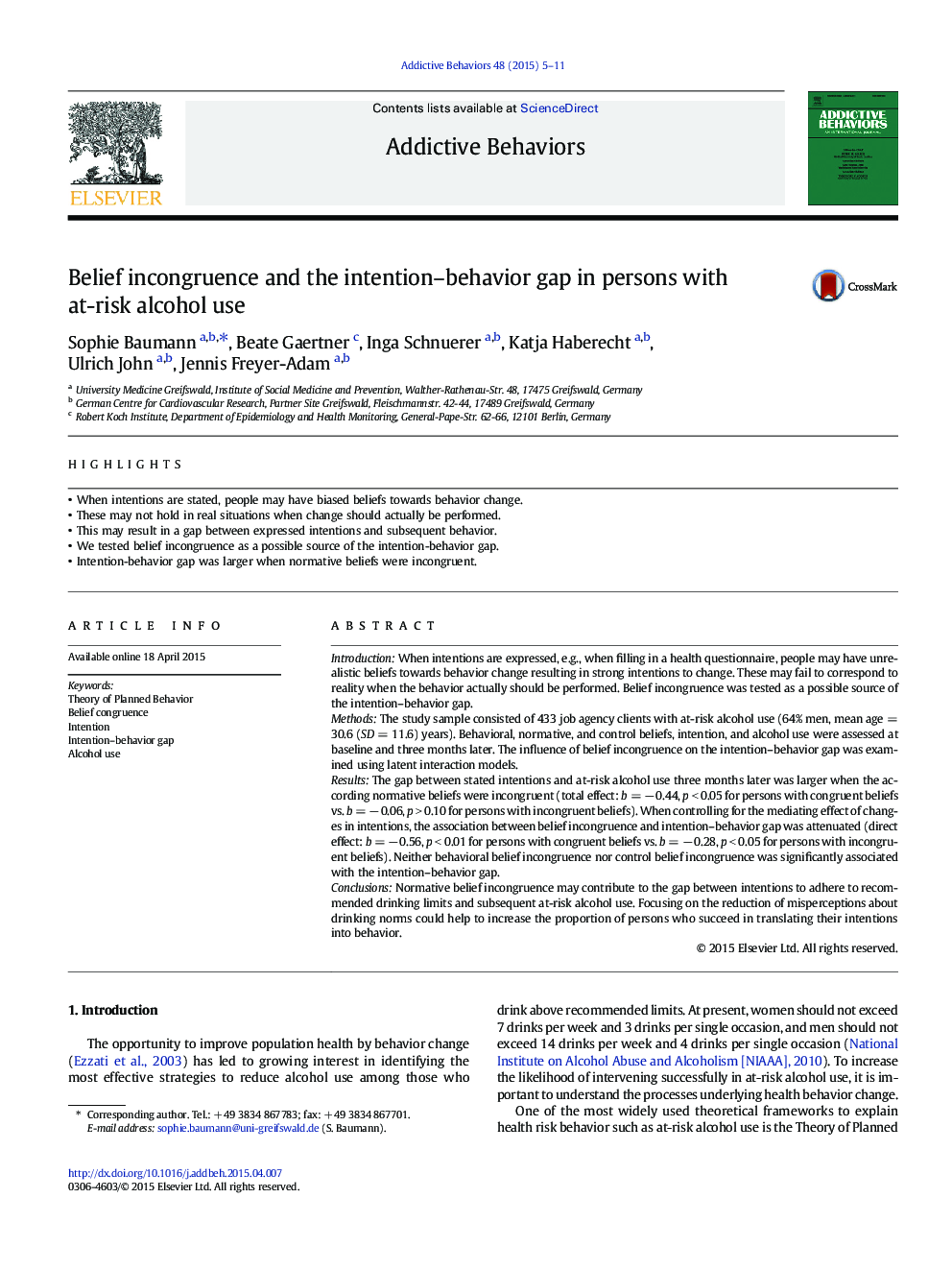| کد مقاله | کد نشریه | سال انتشار | مقاله انگلیسی | نسخه تمام متن |
|---|---|---|---|---|
| 898668 | 1472523 | 2015 | 7 صفحه PDF | دانلود رایگان |
• When intentions are stated, people may have biased beliefs towards behavior change.
• These may not hold in real situations when change should actually be performed.
• This may result in a gap between expressed intentions and subsequent behavior.
• We tested belief incongruence as a possible source of the intention-behavior gap.
• Intention-behavior gap was larger when normative beliefs were incongruent.
IntroductionWhen intentions are expressed, e.g., when filling in a health questionnaire, people may have unrealistic beliefs towards behavior change resulting in strong intentions to change. These may fail to correspond to reality when the behavior actually should be performed. Belief incongruence was tested as a possible source of the intention–behavior gap.MethodsThe study sample consisted of 433 job agency clients with at-risk alcohol use (64% men, mean age = 30.6 (SD = 11.6) years). Behavioral, normative, and control beliefs, intention, and alcohol use were assessed at baseline and three months later. The influence of belief incongruence on the intention–behavior gap was examined using latent interaction models.ResultsThe gap between stated intentions and at-risk alcohol use three months later was larger when the according normative beliefs were incongruent (total effect: b = − 0.44, p < 0.05 for persons with congruent beliefs vs. b = − 0.06, p > 0.10 for persons with incongruent beliefs). When controlling for the mediating effect of changes in intentions, the association between belief incongruence and intention–behavior gap was attenuated (direct effect: b = − 0.56, p < 0.01 for persons with congruent beliefs vs. b = − 0.28, p < 0.05 for persons with incongruent beliefs). Neither behavioral belief incongruence nor control belief incongruence was significantly associated with the intention–behavior gap.ConclusionsNormative belief incongruence may contribute to the gap between intentions to adhere to recommended drinking limits and subsequent at-risk alcohol use. Focusing on the reduction of misperceptions about drinking norms could help to increase the proportion of persons who succeed in translating their intentions into behavior.
Journal: Addictive Behaviors - Volume 48, September 2015, Pages 5–11
